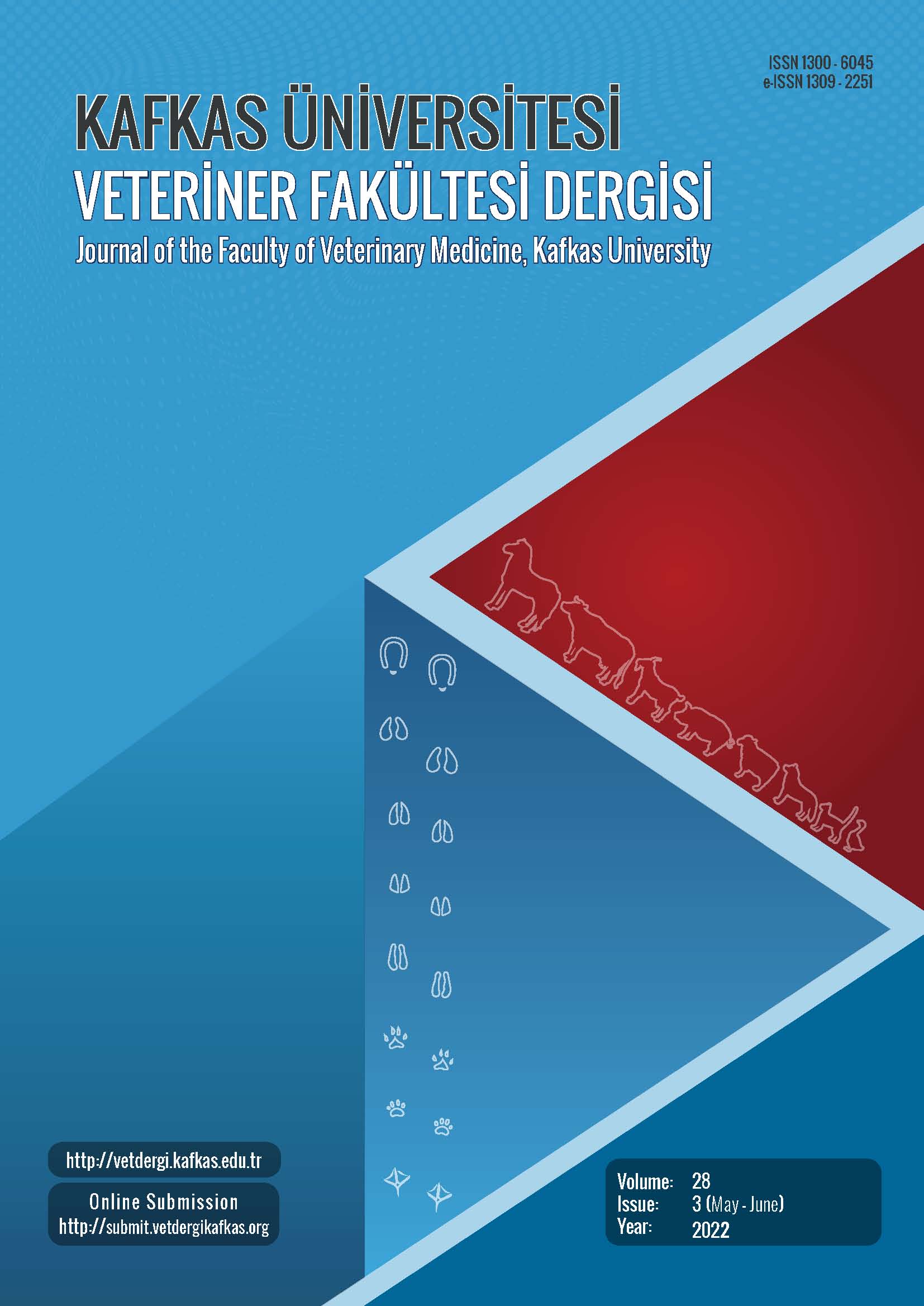
This journal is licensed under a Creative Commons Attribution-NonCommercial 4.0 International License
Kafkas Üniversitesi Veteriner Fakültesi Dergisi
2022 , Vol 28 , Issue 3
Differential Expression of Proteins in Tibetan Sheep Ovary and Relation to Litter Size Traits at Diff erent Follicular Development Stages
1College of Agriculture and Animal Husbandry, Qinghai University, Xining, Qinghai, 810016, PR CHINA2College of Animal Science and Technology, Gansu Agricultural University, Lanzhou, Gansu, 730070, PR CHINA
3School of Life Science, Qilu Normal University, Jinan, Shandong, 250200, PR CHINA DOI : 10.9775/kvfd.2022.27004 Reproductive performance of Tibetan sheep is the most important factor aff ecting the sheep industry"s production effi ciency in Qinghai-Tibet Plateau. To identify diff erences in lambing traits of Tibetan ewes and the ovarian proteome at diff erent stages of follicular development during the reproductive cycle, the ovarian proteome of Tibetan sheep with clear lambing records and diff erent litter sizes were screened and analyzed using label-free mass spectrometry. Th e results showed that of 2508 proteins detected, there were 57 diff erentially expressed proteins during the anestrus season, and compared with single ewes, in twin lambing ewes expression was up-regulated in 43 proteins and down-regulated in 14 proteins; 2664 proteins, with 69 diff erentially expressed proteins, were detected on the 1st day of the ewe estrus period. Expression of 39 proteins in twin ewes was up-regulated and down-regulated in 30 proteins when compared with single ewes; 2704 proteins and 96 diff erentially expressed proteins were detected in 11th day of the ewe estrus period. Expression of 16 proteins in twin ewes was up-regulated and expression of 80 proteins was down-regulated compared with single ewes. Th e pathways in twin sheep that were signifi cantly up-regulated were oxidative phosphorylation (phagosome and endocytosis), oocyte meiosis, extracellular matrix receptor interaction, and cell adhesion. Th e amino acids (lysine, valine, leucine, isoleucine) and fatty acid degradation, TGF-β signal and GnRH signal pathways were signifi cantly down-regulated in twin sheep. GDF9, BMPR-1B, MTHFR and Cu/Zn-SOD were relatively active in diff erent stages of follicular development during the reproductive cycle. Th is study contributes to the research of twin production in Tibetan sheep, the in-depth study of Tibetan sheep fertility, and promotes the development of animal husbandry in the Qinghai-Tibet Plateau. Keywords : Tibetan sheep, Twin trait, Reproductive cycles, Follicular development, Label-free Mass Spectrometry










